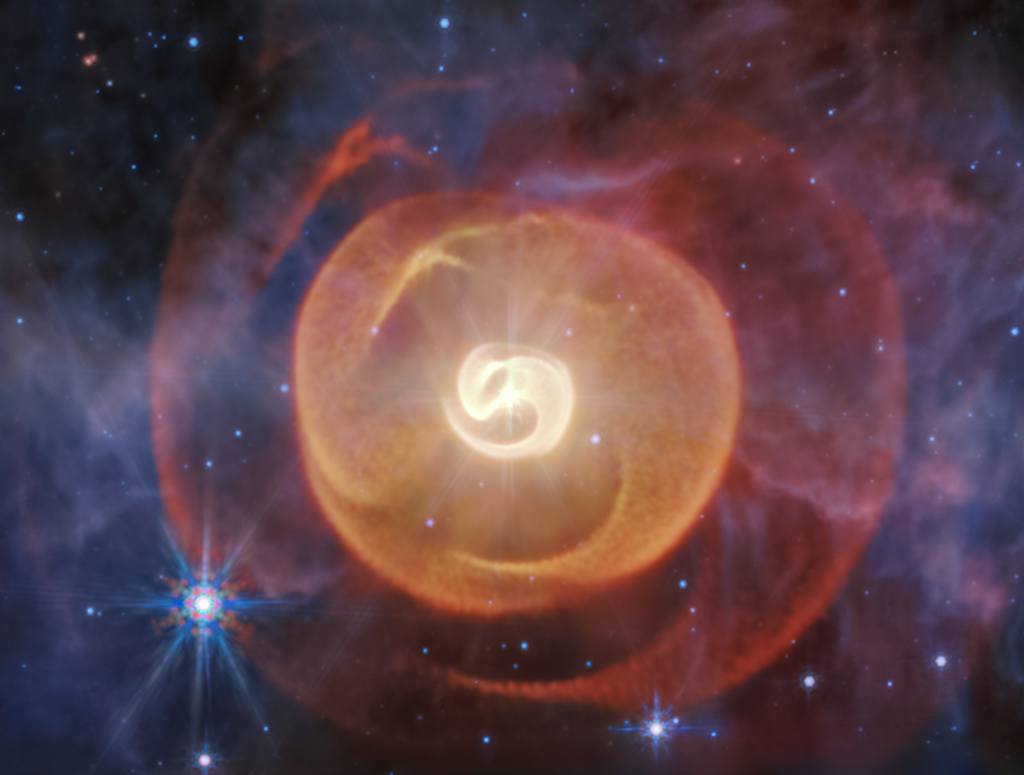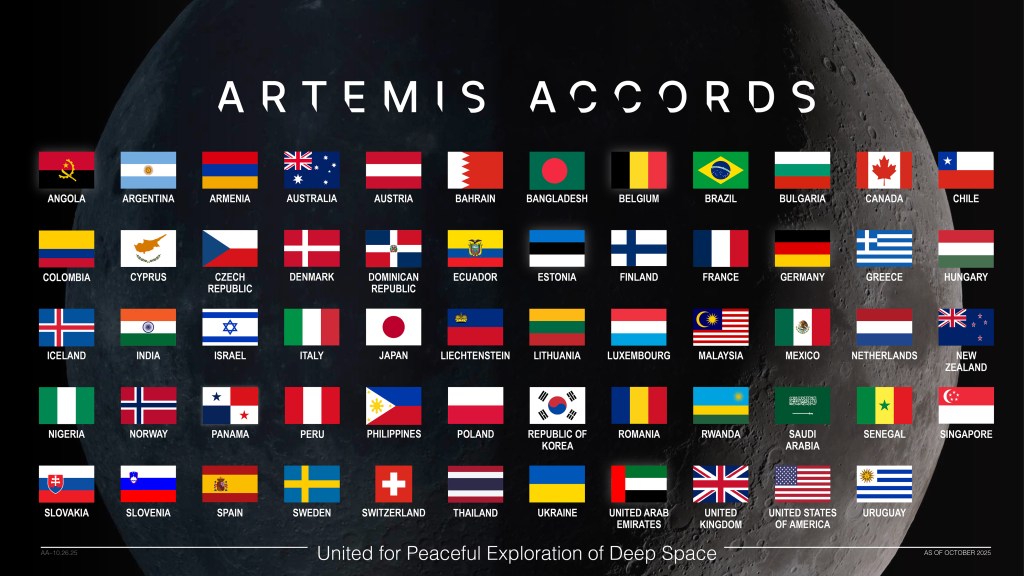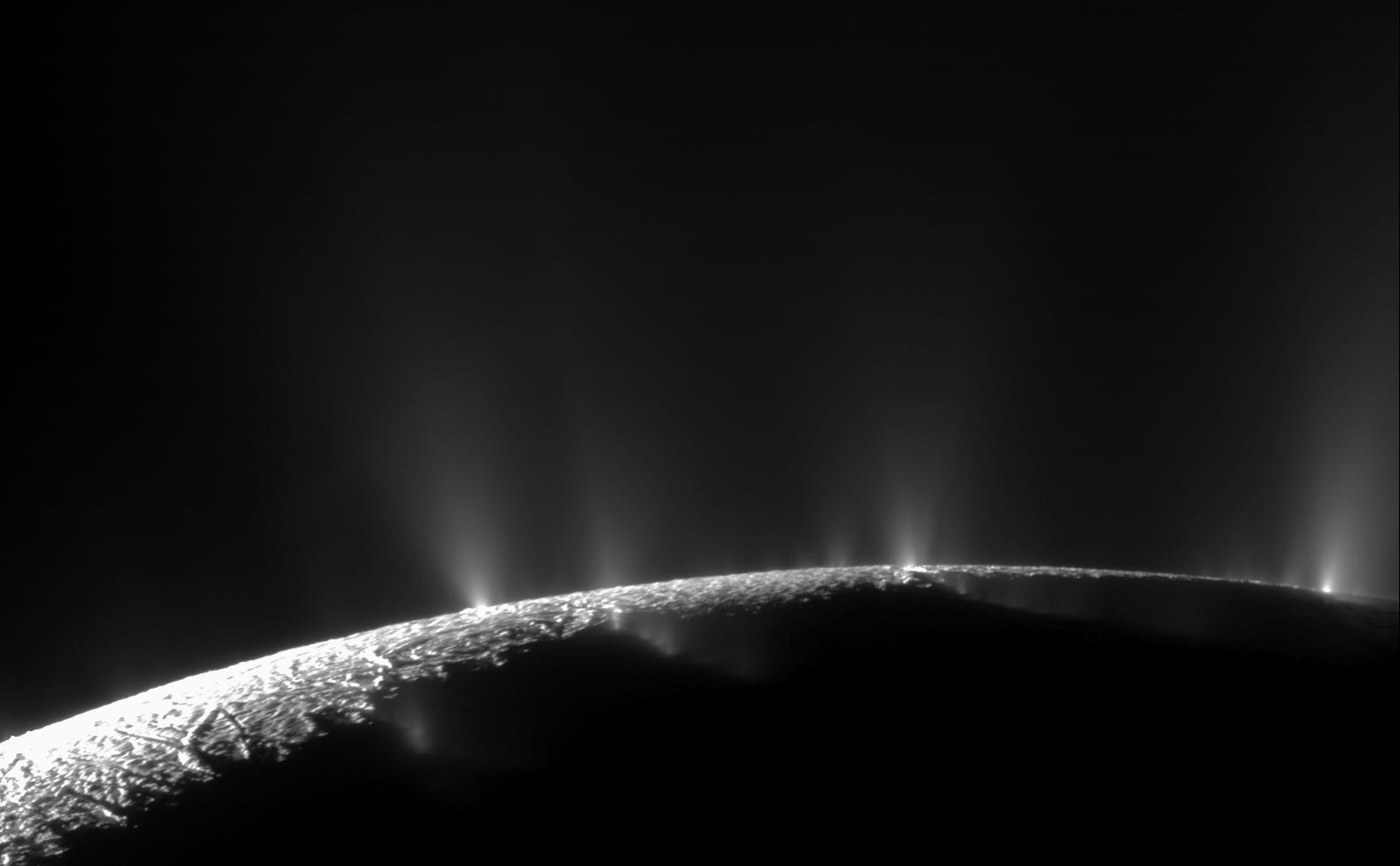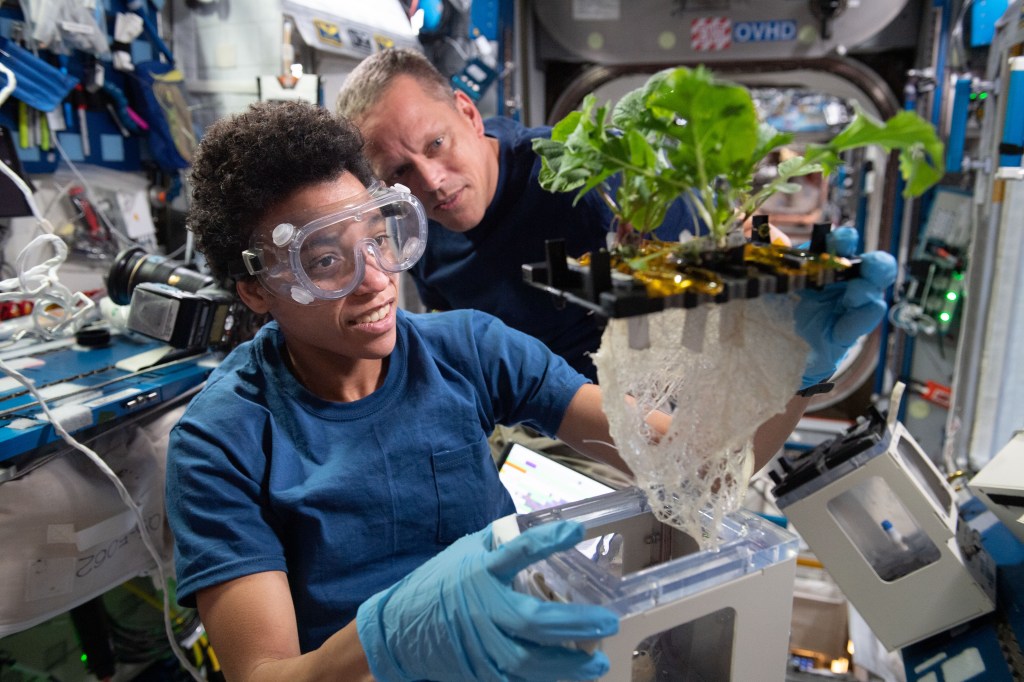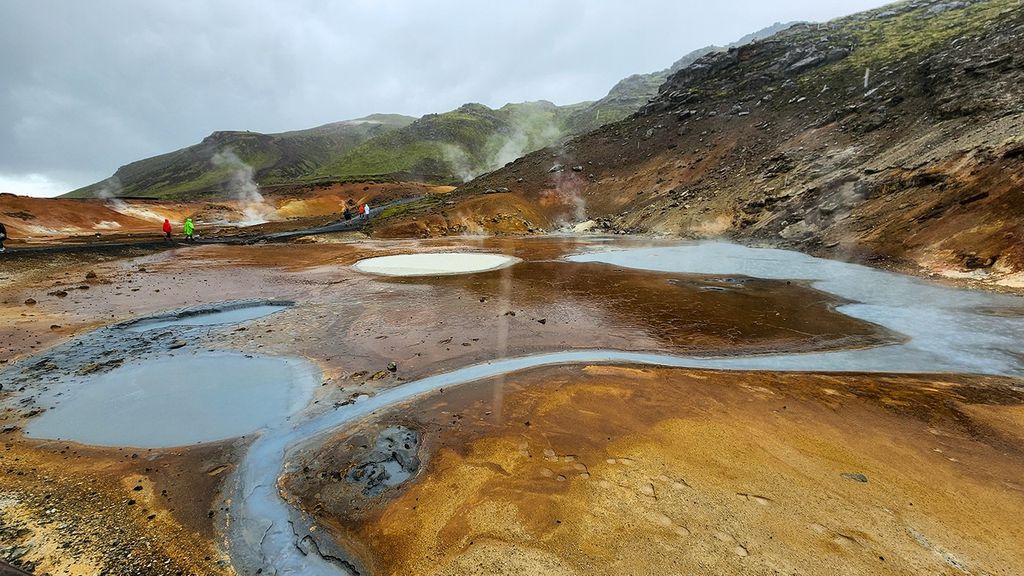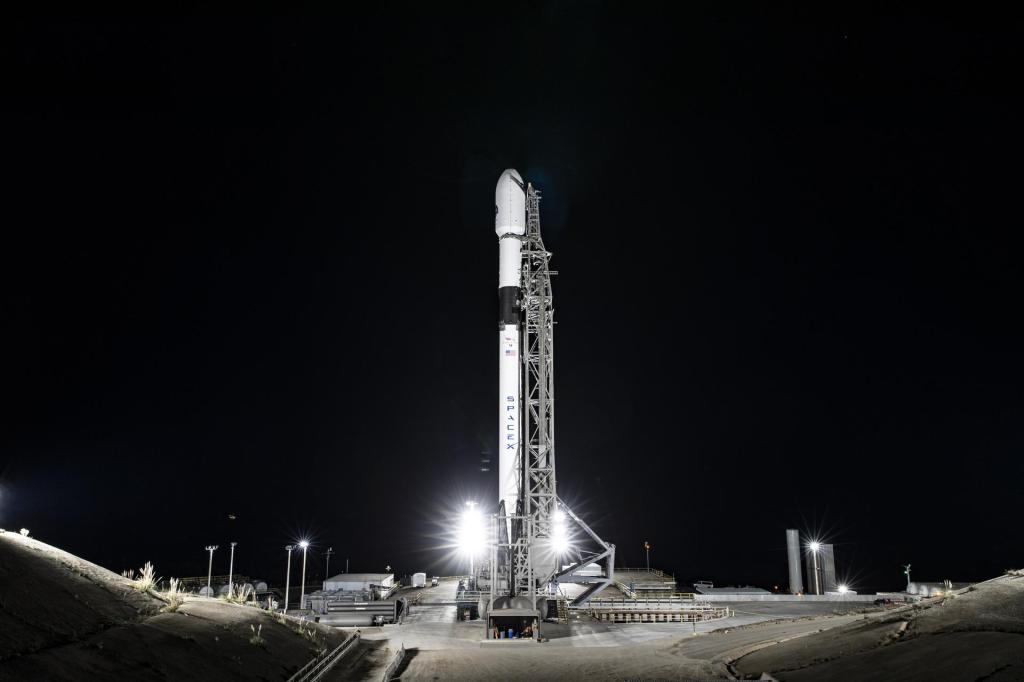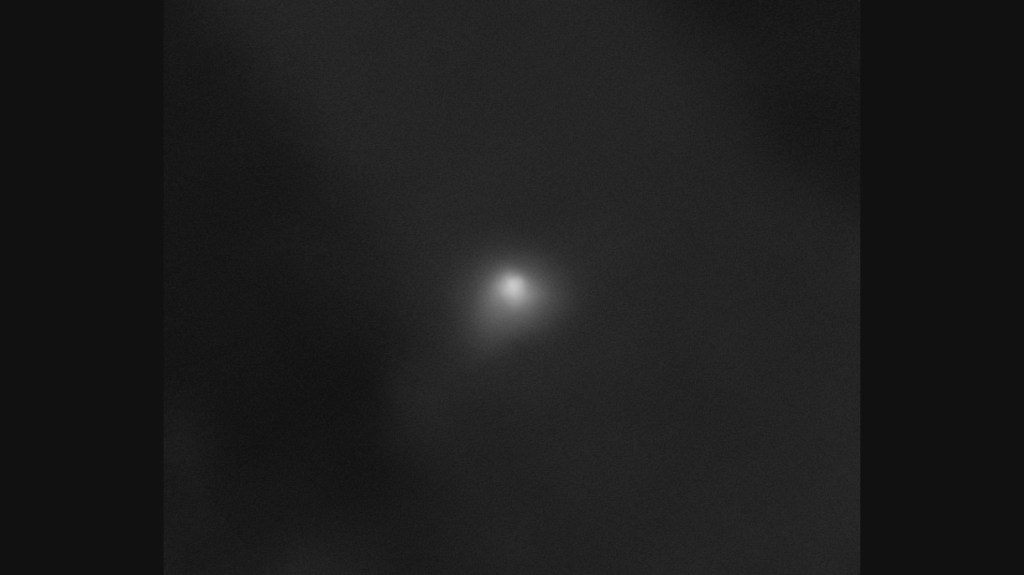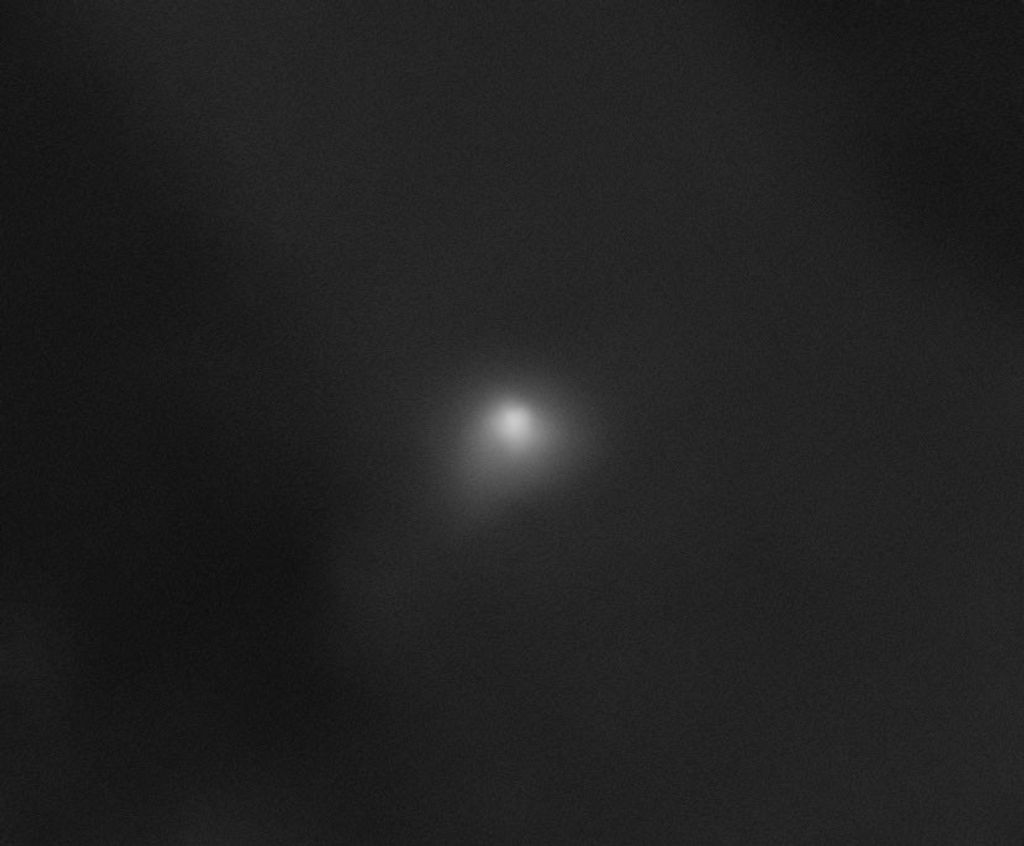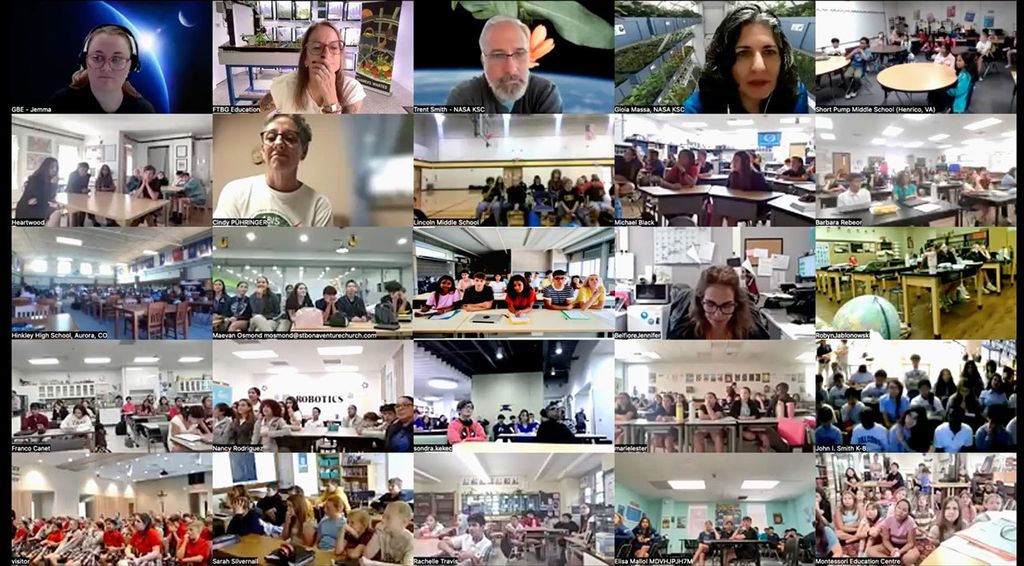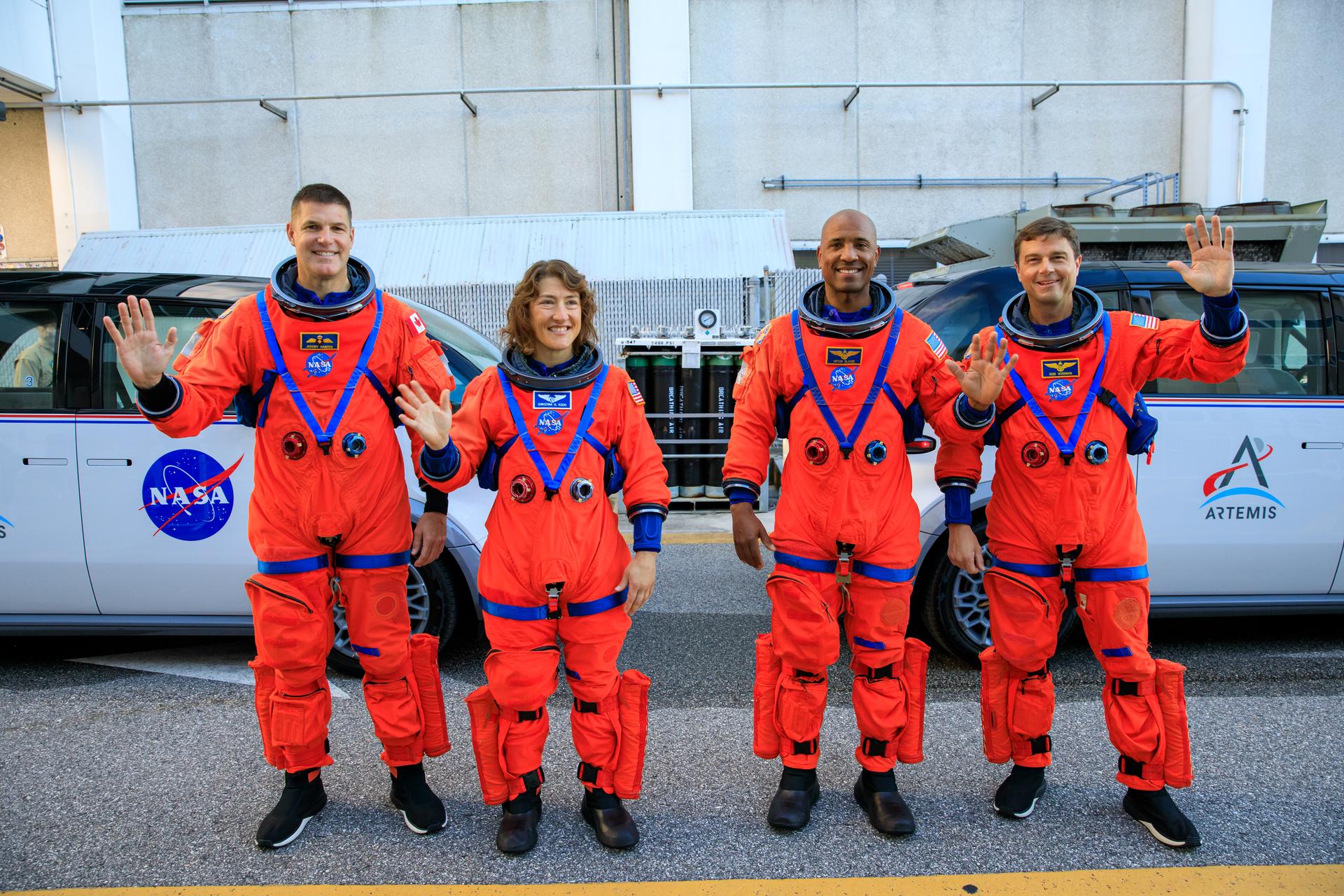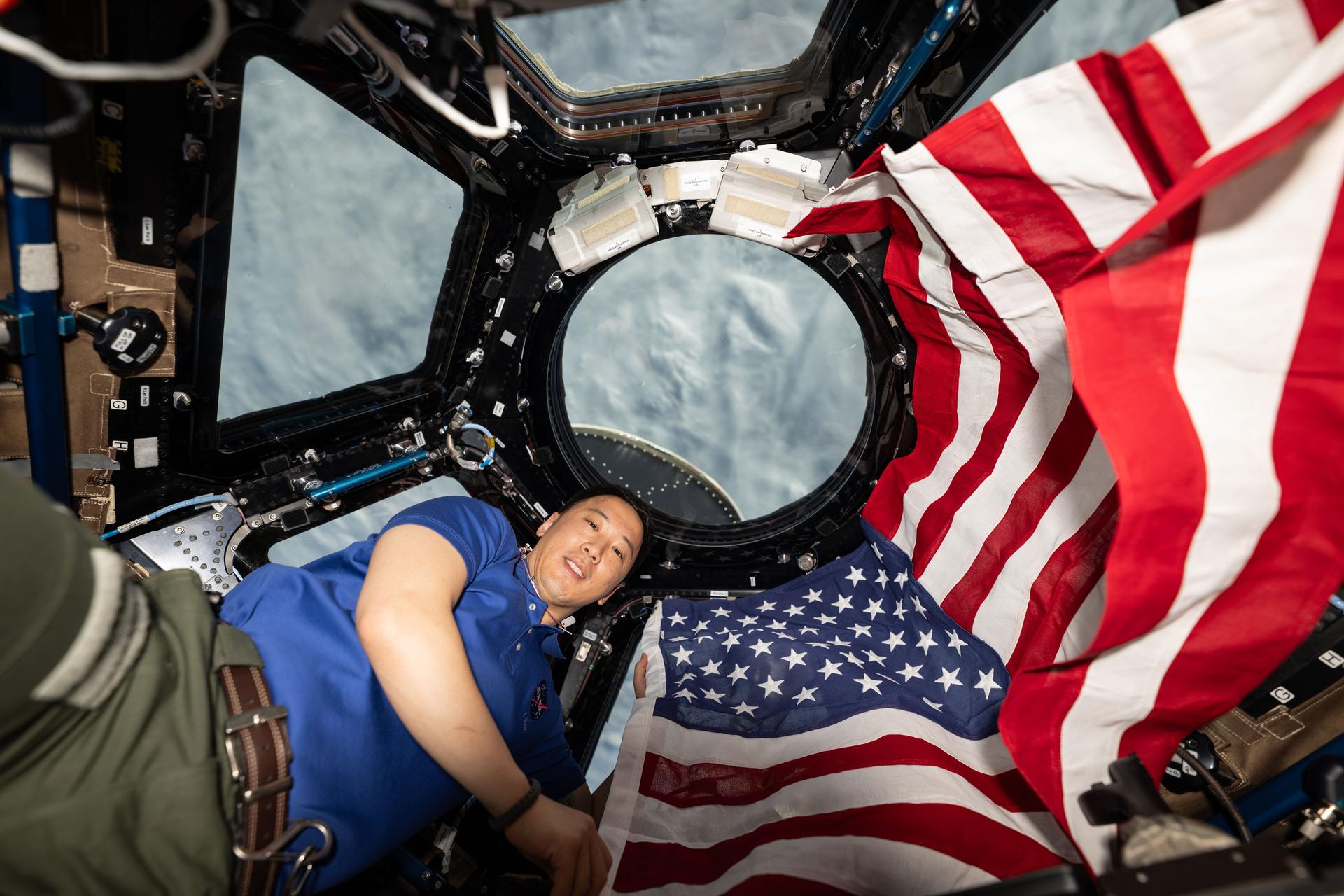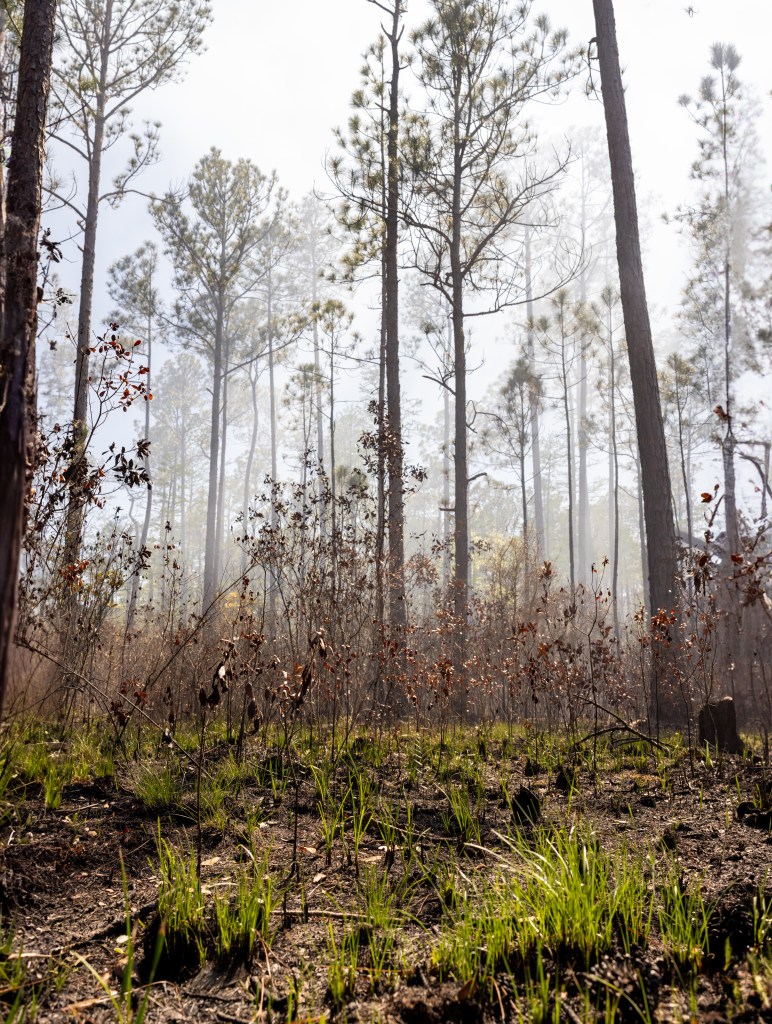

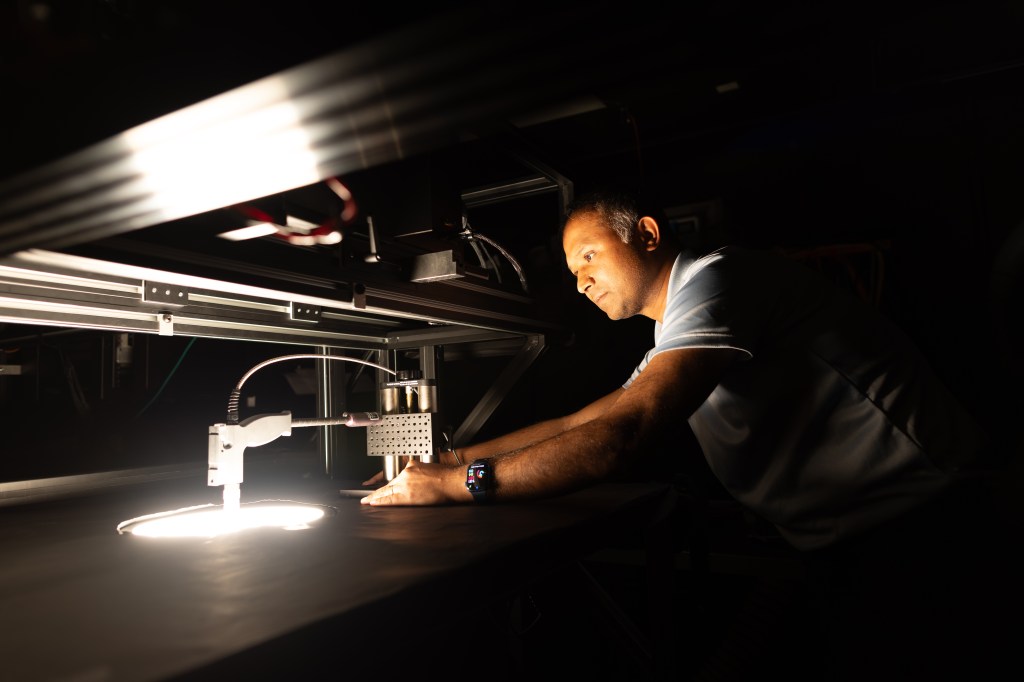
2022 Ames Earth Science Highlights
January 2022
| January 12 |
| Early-career scientist Dan Whitt co-published a paper in Nature Communications, “Storms drive outgassing of CO2 in the subpolar Southern Ocean”. https://www.nature.com/articles/s41467-021-27780-w |
| Florian Schwandner (division chief) and Vince Ambrosia (associate program manager for wildfire applications), both from Ames, participated in a very productive and cordial joint SMD-ARMD-STMD 1.5-day meeting on agency-wide wildfire activities, held at the NASA Aeronautics Research Institute (NARI) at Ames, on 3 and 4 January 2022. |
| The Ames Earth Science division hosted an in-person visit on Wednesday 5 January 2022 by three ESD program managers for a meeting on SMD’s wildfire applications program. |
| January 19 |
| Ames scientists are presenting at and chairing sessions at the 102nd AMS (American Meteorological Society) Annual Meeting. |
| ARSET – Using Earth Observations for Pre- and Post-Fire Monitoring. Amber Jean McCullum and Juan L. Torres-Pérez are leading an ARSET training module on wildfire monitoring using remote sensing observations. |
| January 26 |
| The journal Astrobiology announced that a paper co-authored by Diana Gentry (Biospheric Science Branch) was one of the top five most read papers in Astrobiology for 2021. The paper, “The Venus Life Equation”, examines the requirements for past and present-day habitability of Venus-like planets and suggests a framework for evaluating their relative potential for life. Link: https://www.liebertpub.com/doi/10.1089/ast.2020.2326 |
| 10-11 February: Janet Napolitano (president emerita of the University of California Berkeley and former Secretary of Homeland Security) invited Matt Fladeland to represent NASA sUAS interests in a workshop on small Unmanned Aerial Systems (sUAS), organized on behalf of DARPA (Defense Advanced Research Projects Agency) by the Center for Security in Politics at the Goldman School for Public Policy at UC Berkeley. |
February 2022
| February 2 |
| A 2021 USGS-NASA-Blackswift interagency and public-private partnership to push the boundaries of mid-range small Uncrewed Aerial Systems (sUAS) for volcanic & wildfire hazard monitoring, detection, and tracking with specialized sensors on fixed-wing platforms with autonomous, beyond-visual-line-of-sight (BVLOS) flights under adverse conditions resulted in a NASA feature story that garnered attention in the press. https://www.nasa.gov/feature/ames/volcano-observing-drone-flights-open-door-to-routine-hazard-monitoring/ |
| As severe snowstorms blanket the Northeastern U.S., the Investigation of Microphysics and Precipitation for Atlantic Coast-Threatening Snowstorms (IMPACTS) EVS-3 investigation, managed by ESPO, was scheduled to fly coordinated flights with the ER-2 and P-3 targeting the New Jersey/Long Island area last week. Wallops closed down operations due to the storm and scientists huddled down, conducting mission planning, storm tracking and forecasting, and data analyses. http://espo.nasa.gov/impacts |
| February 9 |
| IMPACTS: The Investigation of Microphysics and Precipitation for Atlantic Coast-Threatening Snowstorms (IMPACTS) EVS-3 investigation, managed by ESPO, successfully collected winter storm data on Saturday, 29 January 2022. The US Northeast was hunkering down to weather the winter ‘bomb cyclone’, but IMPACTS sent the P-3 and ER-2. |
| ESPO (Earth Science Project Office) team members Caitlin Murphy and Jhony Zavaleta were featured in a NASA Earth Expeditions post, “Mission (almost) Impossible: SHARC”. ESPO supported the Japanese HAYABUSA II sample return re-entry with the international mission “SCIFLI Hayabusa2 Airborne Re-entry Observation Campaign”, or SHARC, providing project management. https://blogs.nasa.gov/earthexpeditions/2022/02/02/mission-almost-impossible-sharc/ |
| February 16 |
| A new AERONET site has been established at the University of Costa Rica in San Jose, Costa Rica, under the auspices of the Ames-led ROSES Interdisciplinary Science project “RUMMBLE”, in collaboration with the University of Costa Rica’s GasLab (Andres Diaz). AERONET is a global network of sun-tracking multi-spectral radiometers that track aerosol characteristics. |
| Joe White (United Kingdom), Her Majesty’s Consul General and Technology Envoy to the United States in San Francisco, visited Ames together with a team of Science and Innovation specialists. |
| February 23 |
| Dr. Ramakrishna Nemani of NEX (NASA Earth Exchange) received the highest honor the agency can bestow: The Distinguished Service Medal, “For visionary leadership using global satellite observations to understand critical ecosystem processes vital to NASA’s advancement of science and human welfare”. Nemani retired at the end of 2021. |
| The past week the Ames Earth Science Division hosted several VIP visitors: On Monday February 14th, from SMD: Dr. Thomas Zurbuchen, Associate Administrator and head of SMD, together with Dr. Joel Kearns, Deputy Associate Administrator for Exploration, SMD, and Dr. Kathleen Gallagher Boggs, Deputy Associate Director for Flight Programs, Earth Science Division, SMD. On Tuesday February 15th, from the United Kingdom: Her Majesty’s Consul General and Technology Envoy to the United States Joe White (Consul General, San Francisco), together with two Senior Science & Innovation Officers. On Thursday February 17th, from Belgium: H.E. Jean-Arthur Regibeau, Ambassador of Belgium to the U.S., together with H.E. Ambassador Gunther Hendrik Y. Sleeuwaagen, Consul General of Belgium in Los Angeles, Ms. Nathalie Delrue-McGuire, Honorary Consul of the Kingdom of Belgium in San Francisco, and two counselors. |
March 2022
| March 2 |
| Paul Bui co-authored a publication in Nature Geoscience, led by NOAA “Dominant role of mineral dust in cirrus cloud formation revealed by global-scale measurements” https://www.nature.com/articles/s41561-022-00901-w |
| Division scientists are actively participating in the 2022 Ocean Sciences Meeting (OSM) with presentations and as session co-chairs. |
| March 9 |
| The Investigation of Microphysics and Precipitation for Atlantic Coast-Threatening Snowstorms (IMPACTS) EVS-3 investigation, managed by Earth Science Project Office (ESPO), successfully completed the 2022 deployment. |
| March 16 |
| The Special Presidential Envoy for Climate, John Kerry, visited NASA Ames together with advisors on Tuesday 8 March 2022. Florian Schwandner and Ian Brosnan discussed climate change and relevant Ames Earth Science capabilities with the visitors. |
| The paper “Dominant role of mineral dust in cirrus cloud formation revealed by global-scale measurements”, coauthored by Paul Bui, was published in the 11 March 2022 issue and made the cover of the Nature Geosciences magazine. |
| March 23 |
| The Student Airborne Science Activation (SaSa) program has confirmed its first cohort of 25 first- and second-year early career undergraduate MSI/HBCU students. Link: https://www.nasa.gov/sasa |
| Forrest Melton and Amber McCullum co-hosted the NASA Western Water Applications Office (WWAO) Rio Grande Needs Assessment with Catalina Oaido of Jet Propulsion Laboratory (JPL) and the WWAO team. |
| March 30 |
| Matt Johnson and former staff member Sajeev Philip co-published a peer-reviewed commentary in NATURE: On the role of atmospheric model transport uncertainty in estimating the Chinese land carbon sink. https://www.nature.com/articles/s41586-021-04258-9 |
| Forrest Melton attended the Commodity Classic in New Orleans on 10-12 March 2022 at the invitation of Dr. Karen St. Germain. Forrest presented a Hyperwall talk and demo on OpenET. |
April 2022
| April 6 |
| Laura Iraci, with current and former members of her lab, published a paper in Earth and Space Science characterizing and analyzing trace gas emissions from 13 California fires that occurred under a wide range of environmental conditions. https://agupubs.onlinelibrary.wiley.com/doi/full/10.1029/2021EA002116 |
| Christopher Potter has been invited to be a Co-Editor of a Special Edition in the journal Frontiers in Earth Science on “Climate Change and Coastal Areas”. |
| April 13 |
| The High Altitude Long Endurance (HALE) Uncrewed Aircraft System (UAS) Capability Demonstration Project (PI: Matt Fladeland) is leading a 2022 SBIR subtopic (S16.04) seeking new air vehicle concepts. |
| Diana Gentry and Chinmayee Govinda Raj (Georgia Tech) have been awarded an Early Career Collaboration Award through the NASA Astrobiology Program for Ms. Govinda Raj’s project proposal “Instrument development for European salts: electrical impedance spectroscopy (EIS) on microfluidic platforms for in-situ planetary missions”. |
| April 20 |
| Ames Earth Science staff is heavily engaged in the 2022 Earth Day celebrations and events on April 22, 2022, with presentations at multiple venues, focusing on Earth observations, applications, data fusion and machine learning, related to climate, ecology, water resources, and the oceans. |
| The Student Airborne Research Project (SARP) published a program summary paper in the Bulletin of the American Meteorological Society, highlighting over a decade of “high-flying interns”. https://journals.ametsoc.org/view/journals/bams/103/4/BAMS-D-19-0269.1.xml |
| April 27 |
| ARC scientist Nikki Tulley (SGE) was featured on Faces of NASA. |
May 2022
| May 4 |
| On 28 April 2022, ARC briefed the results of the Constellation Pathfinder mission study to the senior leadership of the Surface Biology & Geology (SBG) Mission and recommended a small satellite mission architecture for presentation at SBG’s upcoming Mission Concept Review. |
| On 28 & 29 April, Ames Earth Science leaders participated in SMD’s second wildfire stakeholder engagement workshop, hosted in-person at GSFC. The meeting focused on NASA’s and partner capabilities mapping onto stakeholder needs, documented in a first workshop held in February 2022. |
| May 11 |
| The Ames Earth Science Division’s Trace Gas Group (TGGR) successfully built and deployed the first of a dozen planned air quality measurement nodes using commercially-available, low-cost, solid-state sensors, relevant to satellite Cal/Val and wildfire related air quality observations. Each node measures multiple gases, as well as temperature and humidity in a unit the size of a lunch box. The team is holding an informal competition for a name for the new network. |
| The U.S. Federal Interagency Coordinating Committee for Airborne Geophysical Research and Applications (ICCAGRA) elected Matt Fladeland (Code SG) as their Chair for a 2-year term. |
| May 18 |
| A delegation of the Saudi Space Commission (SSC) from Saudi Arabia visited Ames on Monday 16 May, 2022. Florian Schwandner, Diana Ly, and Matt Fladeland presented Ames activities and capabilities in Earth System Science, technology development, applications, and airborne sciences with an emphasis on uncrewed aerial vehicles and high altitude long endurance (HALE) platforms. |
| Kate Duffy, TJ Vandal and Weile Wang from the NASA Earth Exchange (NEX) published a paper on “A Framework for Deep Learning Emulation of Numerical Models With a Case Study in Satellite Remote Sensing”. |
| The Student Airborne Science Activation (SaSa) Program under PI Dr. Charles Gatebe engaging undergraduate students at HBCU and other MSI universities, welcomes its first summer class. https://www.nasa.gov/content/2022-sasa-class. |
| May 25 |
| Dan Whitt published a paper in Journal of Physical Oceanography, “Simulation and Scaling of the Turbulent Vertical Heat Transport and Deep-Cycle Turbulence across the Equatorial Pacific Cold Tongue”. |
| Roy Johnson, Sam Leblanc and Steve Broccardo deployed to NOAA’s Mauna Loa Observatory on the Island of Hawai’i from 7 – 16 May 2022 to perform a Langley calibration of the 4STAR-A and 4STAR-B airborne sun photometers, in preparation for the SaSa field campaign. |
June 2022
| June 1 |
| Weile Wang (NASA Earth Exchange), Florian Schwandner (Division Chief), and Vince Ambrosia (Associate Program Manager, Wildfire Applications) participated in the 2022 International Fire & Climate conference, held in Pasadena CA the week May 23-27, 2022. |
| NPP fellow Jeremy Kravitz’s work on “Simulating algae to model water quality in minutes” is currently being featured on the front page of NASA’s High-End Computing Capability (HECC) website. https://www.nas.nasa.gov/hecc/ |
| SaSa, the Student Airborne Science Activation project led by PI Charles Gatebe, is scheduled to begin integration of instruments on the P-3 aircraft at WWF on June 1st. The summer campaign kickoff will occur on 6 June 2022 at University of Maryland, Baltimore County (UMBC). |
| June 8 |
| The NASA Student Airborne Science Activation (SaSa) program kicked-off this Monday, 6 June 2022. 25 first- and second-year undergraduates from Minority Serving Institutions (MSIs) arrived from all over the country last weekend to join in the inaugural summer program. |
| Scientists from the NASA Earth Exchange and the Applications program published the NASA Global Daily Downscaled Projections, CMIP6 in Nature’s Scientific Data journal. https://www.nature.com/articles/s41597-022-01393-4 |
| June 15 |
| DCOTSS (The Dynamics and Chemistry of the Summer Stratosphere) had a very successful first two weeks of the Summer ‘22 deployment. The ER-2 flew 5 science flights, plus a combined transit/science flight. |
| Admiral Rachel L. Levine, MD, Assistant Secretary for Health from the U.S. Department of Health and Human Services visited NASA ARC on Wednesday, June 8. Admiral Levine oversees the White House’s newly established Office on Climate Change and Health Equity, more recently named Office of Environmental Justice. |
| June 22 |
| Florian Schwandner and Donald Sullivan presented and chaired sessions at the Cities on Volcanoes 11 (COV-11) disasters conference on Crete, Greece, and volunteered in local pre-fire forest management activities led by the local civil defense authority. |
| The NASA Student Airborne Science Activation (SaSa) is in the second week of the 2022 summer program. Four students were interviewed and their stories posted on StoryCorps. |
| Paul Bui co-authored a paper on Airborne Emission Rate Measurements Validate Remote Sensing Observations and Emission Inventories of Western US Wildfires, published in Environmental Science & Technology. |
| June 29 |
| Ocean Community Engagement and Awareness using NASA Observations and Science for Hispanic/Latino students (OCEANOS). PI Juan L. Torres-Pérez participated in a series of meetings in Puerto Rico with project Co-I’s to delineate action plans for development of educational modules in preparation for the Summer 2023 internships. |
| On June 16-17 2022, Kristina Pistone virtually attended a meeting of the American Geophysical Union’s Local Science Partners. The Local Science Partners program pairs AGU members with their legislators and provide them with the resources and training to build a sustainable relationship and integrate the sciences with decision-making. |
July 2022
| July 13 |
| On 29 June 2022, the Earth Science Division celebrated Dr. Jennifer Dungan’s retirement and a career spanning more than 30 years, including more than 20 years of Federal service with NASA, last as Project Manager of the NASA Earth Exchange (NEX). |
| ACCLIP (Asian Summer Monsoon Chemical and Climate Impact Project), managed by ESPO, with strong Ames Science and payload participation. In support of the Asian Summer Monsoon Chemical and Climate Impact Project Mission, the Carbon Monoxide Measurement from Ames (COMA) instrument has passed all visual inspections and is ready for the Dress Rehearsal and Flight Readiness Review scheduled for the week of 11 July 2022. |
| 8 July 2022 marked the Student Airborne Science Activation (SaSa) program media day at Wallops Flight Facility. PI Charles Gatebe represented Ames. https://www.nasa.gov/sasa |
| July 27 |
| DCOTSS: The Dynamics and Chemistry of the Summer Stratosphere (DCOTSS) EVS-3 investigation, managed by ESPO. The DCOTSS 2022 deployment is complete, flying 12 research flights for a total of 93 h (102.2 h of combined testing, transit, and research flights). DCOTSS launched 58 balloon sondes from four locations: Texas, Colorado, Kansas, and North Dakota. (https://espo.nasa.gov/dcotss) |
August 2022
| August 3 |
| The Ames Earth Science Division welcomes Dr. Michael Falkowski as new Branch Chief (acting) of the Biospheric Sciences Branch at Ames. Mike is on detail from HQ until the end of the calendar year, when the new permanent branch chief starts. |
| Ames Earth Science Division Chief Florian Schwandner led a delegation from ARC, JPL, and GSFC to the Hellenic Space Center (Greece) on 25 July 2022. He also attended the 44th Scientific Assembly of COSPAR in Athens (Greece), giving several Hyperwall presentations on FireSense – the SMD wildfire project. |
| NPP postdoc Caroline Dang published “Biomass burning and marine aerosol processing over the southeast Atlantic Ocean: a TEM single-particle analysis” in the journal Atmospheric Chemistry and Physics. https://acp.copernicus.org/articles/22/9389/2022/acp-22-9389-2022.html |
| August 10 |
| The Airborne Sensor Facility (ASF) at Ames is in final preparations, including upload on 8 August, for the Western Diversity Time Series (WDTS) flights/ The MASTER and PICARD (ASF) instruments will fly with AVIRIS (JPL) on the NASA ER-2 in August. The PICARD instrument will be on-board for this mission as a piggyback to acquire data essential for characterization and testing. |
| Matt Johnson published an article “Methane Emission From Global Lakes: New Spatiotemporal Data and Observation-Driven Modeling of Methane Dynamics Indicates Lower Emissions” in JGR Biogeosciences. https://agupubs.onlinelibrary.wiley.com/doi/10.1029/2022JG006793 with funding from the ESD Interdisciplinary Sciences (IDS) program. |
| Ames Earth Science Division leadership is deeply engaged in several meetings in August, on project design and planning for the Disasters Coordination Office (DRCO) of the Disasters Applications Program, and the FireSense wildfire project in ESD. |
| August 17 |
| Ames Earth Science Division Chief Florian Schwandner represented the SMD Earth Science Division at a Space Policy event by VPOTUS Kamala Harris at the Chabot Center in Oakland, CA on 12 August 2022. |
| AGU’s EOS magazine covered Matthew Johnson’s recent publication “Methane Emission From Global Lakes…” (JGR Biogeosciences) as a Research Spotlight. |
| Forrest Melton will be presenting an invited talk on 17 August 2022 at the National Water Use Data Workshop hosted by Western States Water Council in Salt Lake City, UT. |
| August 31 |
| Dr. Fabrizio Buongiorno (INGV Italy) will visit the Ames Earth Science Division to learn more about potential collaboration opportunities in remote sensing, especially in relation to current and future ASI missions (PRISMA, PRISMA SG and PLATINO1), and how airborne data could help simulate observations of future missions, to develop new technologies and integrate space data. She leads remote sensing at one of their government agencies as Director of Technology Research, INGV Center for Space Observation. |
| Cindy Schmidt and Florian Schwandner participated in a second in-person program design session at NASA HQ on 29 & 30 August 2022, for the Disasters Applications Program in ESD, under Shanna McClain, to scope the Disasters Response Coordination Office (DRCO). |
September 2022
| September 7 |
| The Airborne Sensor Facility participates in the September Western Diversity Time Series (WDTS) flights with MASTER, and the hyperspectral imagers PICARD and HySPEX Mjolnir. Flights on 2, 5, and 6 September covered flight boxes over Lake Tahoe, San Francisco Bay Area, CA and Santa Barbara, CA. |
| ACCLIP: Asian Summer Monsoon Chemical and Climate Impact Project. The ACCLIP project reached the end of a very challenging yet very successful science campaign where the NASA WB-57 conducted 17 research flights. ACCLIP is managed by ESPO and featured instruments and researchers from Ames. Laura Iraci, Jim Podolske, NPP fellows Kristen Okorn and Caroline Dang, Paul Bui, Ric Kolyer, Levi Golston. Roy Johnson, Jim Eilers, Emma Yates, and others from Ames participated and have safely returned. The COMA instrument (Carbon mOnoxide Measurement from Ames) flew on this campaign. |
October 2022
| October 5 |
| The Inaugural NASA Snow Albedo Workshop took place at NASA Ames from 28-30 September 2022. The workshop brought together experts in snow albedo in a hands-on, collaborative workspace to identify where scientific gains have been made and where scientific opportunities exist to advance the science of snow albedo. |
| On 29 September 2022, several concurrent and coordinated events transformed the NASA Research Park at Ames into a summer festival of science and technology and life at NASA: The Celebrate Ames Day, the Innovation Fair, DEIA Day, and the annual USGS/NASA Science & Technology Colloquium with poster session featuring research and technology posters from both USGS and NASA researchers. |
| October 12 |
| S-MODE: The Sub-Mesoscale Ocean Dynamics Experiment (S-MODE), EVS-3 investigation, managed by ESPO. The S-MODE Intensive Operating Period (IOP) kicked into full gear on 6 October 2022 with the B-200 (AFRC) arrival at NASA ARC. ESPO was in Newport, OR supporting the mobilization of the M/V Bold Horizon, which set sail 7 October 2022. The B200 first possible science flight was completed on Saturday, 8 October 2022. The NASA G-III (LaRC) is now scheduled to transit to NASA ARC 9 October 2022and plans to start science flights Tuesday,11 October (weather dependent). Link: https://espo.nasa.gov/s-mode |
| October 19 |
| S-MODE: The Sub-Mesoscale Ocean Dynamics Experiment (S-MODE), EVS-3 investigation, managed by ESPO, was highlighted in the NASA Morning Brief for Monday, October 17, 2022. https://www.spacedaily.com/reports/S_MODE_Field_Campaign_deploys_to_the_Pacific_Ocean_999.html |
| 12 – 14 October 2022, Surface Biology & Geology (SBG) Community Workshop, Washington, DC. Ian Brosnan (SG), Charles Gatebe (SGG), Liane Guild (SGE), Weile Wang (SGE), Yohei Shinozuka (SGG), Jon Jenkins (TNC) and Scott Horner (RS) attended the SBG Community Workshop and reported on their science, science data processing, and open-source science activities that support the SBG mission and Earth System Observatory. |
| October 26 |
| Dr. Kate Duffy recently published, “Climate-mediated shifts in temperature fluctuations promote extinction risk” in Nature Climate Change. The results from the publication show that the effects of climate change may be more extensive than previously predicted on the basis of the statistical relationship between biological performance and average temperature. |
| CPEX-CV: Convective Processes Experiment – Cabo Verde, managed by ESPO. ESPO has concluded another highly successful science campaign with the DC-8. The CPEX-CV team executed thirteen science flights plus the transit flights. The DC-8 flew nearly 117 hours in support of the CPEX-CV campaign and the science team was very pleased with all the data collected. In addition, we conducted some highly successful outreach during a local media day. |
November 2022
| November 2 |
| The Airborne Science Office has published the most recent NASA Airborne Science Program Newsletter. Highlights include Ames’ own SARP project, ACCLIP that included the Ames COMA payload (PI: Iraci, Podolske), and many other interesting earth science flight projects across the agency. This report edited by Susan Schoenung (BAER Inst) and Matt Fladeland (Code SG) provides updates to the user community and program/flight project stakeholders on aircraft activites and new capabilities. Ames also manages the Program website, flight request system, aircraft tracker, and flight request system at https://airbornescience.nasa.gov |
| November 9 |
| The Airborne Sensor Facility (ASF) supported a recurring ASF/RCL (Ames-Goddard) cross-calibration exercise from 1-7 November 2022. RCL Lab representatives worked with ASF engineering over the course of the past week to collect data on site at Ames. The cross-calibration appears to be successful and data analysis will continue for the next approximately one week. |
| NASA SaSa Leadership Team Retreat: The SaSa Leadership Team held a SaSa Retreat at NASA Ames Research Center from 28-29 October 2022, which brought together the SaSa Leadership Team, comprised of the Principal Investigator, six institutional leads from Minority Serving Institutions. |
| November 16 |
| ESI SET (Earth Science and Interiors, Solid Earth Team) Meeting and Early Career Workshop. ESPO supported this hybrid event 7-10 November 2022 at Scripps Institute in La Jolla, CA. The biennial Solid Earth Team (SET) meeting offers opportunities for interactions among the broader Earth Surface and Interior (ES&I) community. From Ames, Earth Science Division Chief Florian Schwandner, Airborne Science Manager Matt Fladeland, NASA Earth Exchange PI Ian Brosnan, and Steve Broccardo (BAERI) attended. |
| Ju-Mee Ryoo published part 2 of the EVS-2 ORACLES paper, A meteorological overview of the ORACLES (ObseRvations of Aerosols above CLouds and their intEractionS) campaign over the southeastern Atlantic during 2016–2018: Part 2 – Daily and synoptic characteristics, in Atmos. Chem. Phys., 22, 14209–14241. https://acp.copernicus.org/articles/22/14209/2022/ |
| November 30 |
| Emma Yates has been appointed Associate Program Manager in the Applied Sciences’ Equity and Environmental Justice (EEJ) Program. |
| Christopher Potter visited Established Program to Stimulate Competitive Research (EPSCoR) project co-investigators at Nicholls State University’s (Thibodaux, LA) Unmanned Aerial Systems (UAS) remote sensing laboratory in the Department of Applied Sciences, Geomatics. |
| Mike Falkowski (together with Laura Lorenzoni) presented several NASA Hyperwall talks at COP27 on the topics of biodiversity, ocean ecology, terrestrial ecology, the water cycle, OpenET, and wildfires. He was interviewed by Canadian Broadcasting Corporation (CBC) News on methane monitoring. |
December 2022
| December 7 |
| On 6 December 2022, Ames hosted a HQ delegation to assess Ames as a site host for a future large science aircraft. |
| Vince Ambrosia (CSUMB) co-chaired the 37th (Virtual) Tactical Fire Remote Sensing Advisory Committee (TFRSAC) meeting on 29-30 November 2022. |
| December 14 |
| IMPACTS: Investigation of Microphysics and Precipitation for Atlantic Coast-Threatening Snowstorms, EVS-3 investigation, managed by ESPO. ESPO is the field at NASA WFF and NASA AFRC to oversee the instrument integration and test flights for both NASA P-3 and NASA ER-2 aircraft. ESPO is preparing to ship the ER-2 aircraft and instrument support equipment on January 17. (espo.nasa.gov/impacts) |
| S-MODE: The Sub-Mesoscale Ocean Dynamics Experiment (S-MODE), EVS-3 investigation, managed by ESPO. Successful data workshop held on Dec 1st attended by 61 participants. (espo.nasa.gov/s-mode) |

